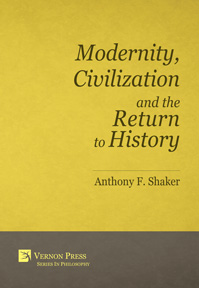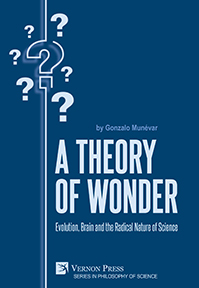Getting Bergson Straight: The Contributions of Intuition to the Sciences
by Pete A. Y. Gunter (University of North Texas)
Purchase this book
(click here to change currency)
It is at its best when explaining its own thesis regarding the multiple rhythms of duration that are part of the material world, as Bergson sees it. It also excels when it is updating Bergsonian ideas with clearly cognate positions in ‘contemporary’ physics, biology, neurology, etc: it is then that it performs its objective optimally, namely to show that Bergson’s intuition of duration ‘can form the basis of new sciences or the rejuvenation of old ones.’
Professor John Ó Maoilearca
Department of Critical and Historical Studies
Kingston University, London
This study concerns the ideas of one particular philosopher, Henri Bergson, whose views of time, intuition, and creativity have had a significant impact on art, literature, and the humanities, both in his time and in our own. Although it is generally recognized that Bergson’s ideas have significantly impacted the arts and the humanities, it has not been recognized how they have also had a creative influence on the sciences as well. Nor has it been realized that this was one of his most basic contentions. Bergson’s conception of intuition—his fundamental insight into reality—was not limited to fugitive insights into human existence. By realizing previously unsuspected possibilities for research and discovery, his endeavors were also meant to make possible new advances in the sciences. If it enabled his cousin by marriage, Marcel Proust, to explore human memory in depth, it also inspired psychologists like Daniel Schachter to use Bergson’s ideas to make real contributions to contemporary memory science. If his notion of creative evolution brought many thinkers to a belief in human creative freedom, it brought others (notably Alexis Carrel and Pierre Lecomte de Noüy) to a scientific study of biological time. Among his successful speculations was the theory of the Big Bang cosmology. 'Getting Bergson Straight' shows many points at which Bergson’s ideas anticipated future developments in the sciences. This was seen clearly by the Nobel Prize-winning physicist Luis de Broglie who viewed Bergson’s physics as presaging quantum physics. Thus, the text is well situated for arts, humanities, social science, and natural science classrooms studying creative thinking and/or intellectual history.
Acknowledgments
Foreword
Randall E. Auxier
Southern Illinois University Carbondale
Introduction
A. A Few Preliminary Remarks
B. Intuition-Analysis, Duration-Space
I. A Discovery and its Discontents: Time and Free Will
A. Duration versus Space: Bergson’s First Approach
B. A Glance at Time and Free Will
II. Rethinking Duration: Matter and Memory
A. Personal Memory
B. Proust and Memory: Developing an Intuition
C. Bergson and Memory Science
III. Rhythms of Duration
IV. From Duration to Biological Time
A. Pierre Lecomte du Noüy, Alexis Carrel
V. Bergson’s Expanding Space: His Cosmology
VI. Bergson, Fractal Geometry, and the Peculiar Nature of Space
VII. More on Fractal Geometry
A. Divergent Fractals, Divergent Evolution
VIII. Duration and the Structures of Life: A First Look at Bergson’s Biology
A. Time in Medicine: Its Relevance to Everything
B. Time and the Brain: Chrononeurophysiology, or Neurophysiology as Music
C. Time and the Hippocampus: An Odd Duality
D. Chronobiology in General
IX. Duration, Neurosis and Dark Time
A. Carl Gustav Jung
B. Charles Blondel
C. Eugene Minkowski
D. Pierre Janet
E. Jean Piaget
F. Other Influences: A Long (and Incomplete) List
G. Some Speculations on Duration and Cyclical Addiction
X. Physics, Disorder, and Life
A. New Beginning: The Thermodynamics of Ilya Prigogine
XI. Understandable Misunderstandings: Early Anglo-American Receptions of Bergson’s Thought
A. The Antibergsonian Polemic of George Santayana
B. Bertrand Russell on Bergson: Bats, Bees, and Knowledge
1. Instinct and Russell
2. Continuity Unmasked
3. A.O. Lovejoy: The Contradictions of Duration
XII. Second Interlude: Why We Can Measure Nature
XIII. Bergson’s Physics: Speculations Becoming Quanta
A. Introduction
B. Bergsonian Matter and Quantum Physics: Some Striking Parallels
C. Louis de Broglie’s Bergsonian Essay
D. At the Limit: The Structure of Material Duration
E. Brief Concluding Remarks 118
XIV. Bergson’s Physics: An Encounter With Relativity
A. Einstein’s Rejection of Newton: New Light
B. Bergson’s Critique of Relativity: The Paradox of the Twins
C. Selected Affinities: The Convergence of Bergson’s Physics and Einstein’s
D. A Dispute Without a Victory: Contradictions in Contemporary Physics
XV. A Realm of New Possibilities: The Nonlinear Thermodynamics of Jeremy English
A. Entropy Production as the Basis for Life
B. Metaphysical “Forcing”: Élan vital and the Reconfiguration of Matter
XVI. Brief Concluding Remarks
Bibliography
Index
Professor Pete A.Y. Gunter began the study of philosophy at the University of Texas in the plan two honors program, from which he graduated in 1958. A Marshall scholar at Cambridge University (1958-1960), in 1963, he was awarded a Ph.D. from Yale University for his dissertation on the relation of intellect and intuition in the work of Henri Bergson. The present work is a thoroughgoing elaboration and development of this dissertation, brought up to date through contact with new developments in the sciences. Professor Gunter taught philosophy at Auburn University (Alabama) from 1962-1965, then at the University of Tennessee in Knoxville. In 1969, he moved to Denton, Texas, where he founded the department of philosophy at North Texas State University (now the University of North Texas).
The more than 50 years in which Professor Gunter has taught at the University of North Texas have been characterized by a broad variety of interests. He has worked on several environmental projects, notably the creation and enlargement of the Big Thicket National Biological Preserve, the first such in the history of the National Park Service. He has written three books on the big thicket and edited and published two others. His 'The Big Thicket: A Challenge for Conservation' (Jenkins, 1972) was credited with playing a role in the establishment of the Preserve.
Prof. Gunter has published 19 books, over 160 book reviews, and innumerable articles. Among the former are 'Creativity and George Herbert Mead' (1990), 'Bergson and the Evolution of Physics' (1969), and 'Bergson and Modern Thought: Towards a Unified Science' (1987). He published the 'Bergson Bibliography' (1974, 1st ed; 1986, 2nd ed) with the Philosophy Documentation Center as well as a third edition—adding several thousand items—for the Presses Universitaires de France (online, Espace Bergson).
A folk singer, Prof. Gunter has written many songs along with published poems and short stories.
Intuition, conceptual creativity, biological time, the unconscious, philosophical method
Subjects
History
Philosophy
Series
Series in Philosophy
Related services
Find in a library near you Download HQ cover Find in Bookshop.org Find this title in AmazonSee also
Bibliographic Information
Book Title
Getting Bergson Straight: The Contributions of Intuition to the Sciences
ISBN
978-1-64889-737-5
Edition
1st
Number of pages
182
Physical size
236mm x 160mm

![Getting Bergson Straight: The Contributions of Intuition to the Sciences [Paperback]](/file/21407/2da83574301336ee58936e0dca59b8a0/1691166626.jpg)






